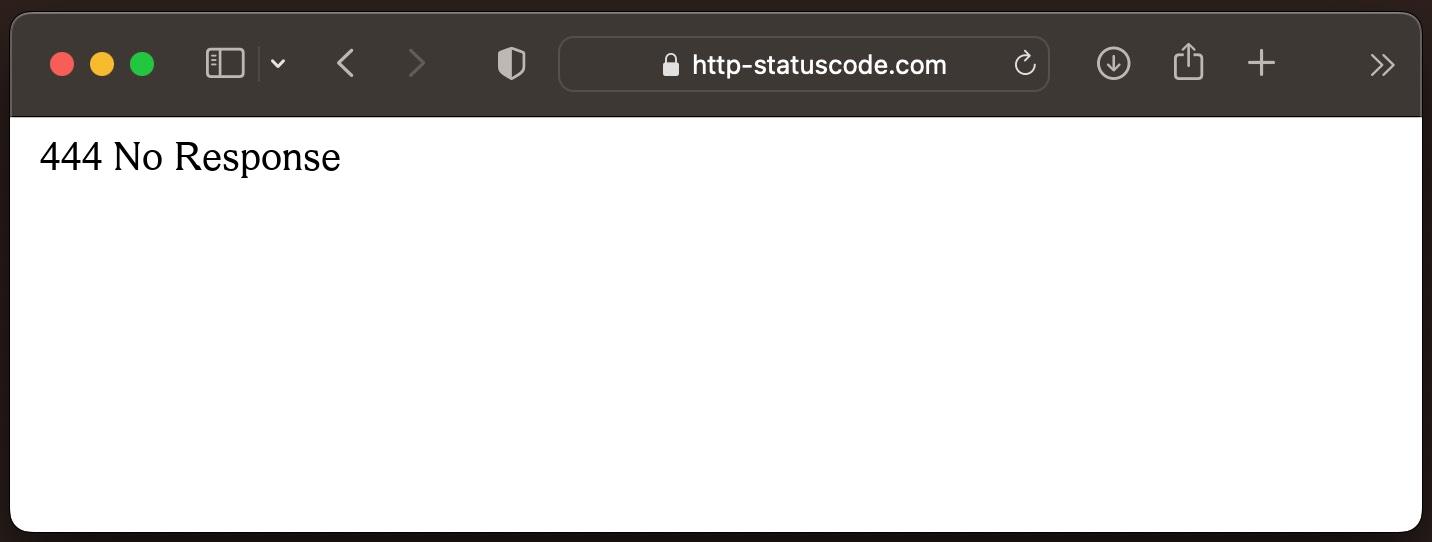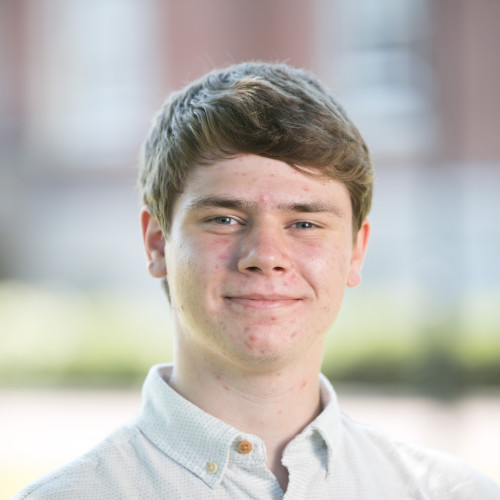444
No Response
General explanation of the 444 status code
This status code is typically used when a client drops the connection before the request is fully processed by the server. In some cases, firewalls or other network devices may also abort the connection and return the HTTP status code 444 No Response.
Specification of the HTTP status code 444
Source / Quote by: The 444 No Response HTTP Status Code is specified by section Module ngx_http_rewrite_module of HTTP NGINX.
How to throw a 444 statuscode with PHP?
To throw the HTTP status code 444 on a web page, the PHP function http_response_code can be used. The syntax is as follows: http_response_code(444) (PHP 5 >= 5.4.0, PHP 7, PHP 8)
Test the 444 HTTP status code
In order to be able to display the HTTP status code (in this case 444 No Response) and other information on the client side, the development console must be opened with F12. Afterwards you have to navigate to the tab "Network". Now you can open the page, in the network tab you should see the web page (example index.php). This must be selected and then the Herder section must be selected. Here the user will see the following result:

URL: https://http-statuscode.com/errorCodeExample.php?code=444
Status: 444 No Response
Those: Network
IP address: XX.XX.XX.XX

How do I solve the problem with the 444 status code?
The HTTP status code 444 No Response is an nginx-specific status code used to return a non-standard response without explanation and close the connection immediately. It is usually a means of aborting unwanted or malicious requests.
If you encounter status code 444 No Response, it may be due to a number of reasons. Here are some steps you can follow to fix the problem:
- Check the configuration of Nginx
- Open the nginx configuration file, usually nginx.conf or in the files inside the sites-available directory.
- Look for rules that return status code 444 No Response. This could be accomplished by directives such as return 444 No Response;.
- Analyze the intent of the rule
- If you find that certain rules result in a 444 No Response status, try to figure out why that rule is in place. Perhaps it was set up to block certain malicious requests or certain IP addresses.
- Check Nginx's access and error log
- The logs (usually access.log and error.log) can give you clues as to which requests are resulting in a 444 No Response status. You can view details such as the requesting IP address, user agent, and other header information.
- Make corrections
- If you find that legitimate requests are being blocked, adjust the appropriate rules in your Nginx configuration or remove them altogether.
- If the rule was intentional, consider refining it to reduce false positives.
- Check firewall and security settings
- Sometimes firewall or security settings on the server can cause legitimate requests to be blocked. Check any security tools or systems you are using and make sure they are configured correctly.
- Restart Nginx
- After making changes to the configuration, don't forget to restart Nginx for the changes to take effect. This can usually be accomplished with a command like sudo service nginx restart or sudo systemctl restart nginx.
- Testing
- After you make changes, run tests to make sure the problem is fixed. Continue to monitor your logs to make sure everything is working as expected.
By following these steps, you should be able to fix, or at least better understand, the 444 No Response status code issue in Nginx. It's always a good idea to make regular backups of your configuration files and make changes incrementally to minimize potential problems.
.Browser compatibility of the 444 status code
| Chrome | no data |
| Edge | no data |
| Firefox | no data |
| Opera | no data |
| Safari | no data |
| Chrome Android | no data |
| Firefox for Android | no data |
| Opera Android | no data |
| Safari on iOS | no data |
| Internet | no data |
| WebView Android | no data |
